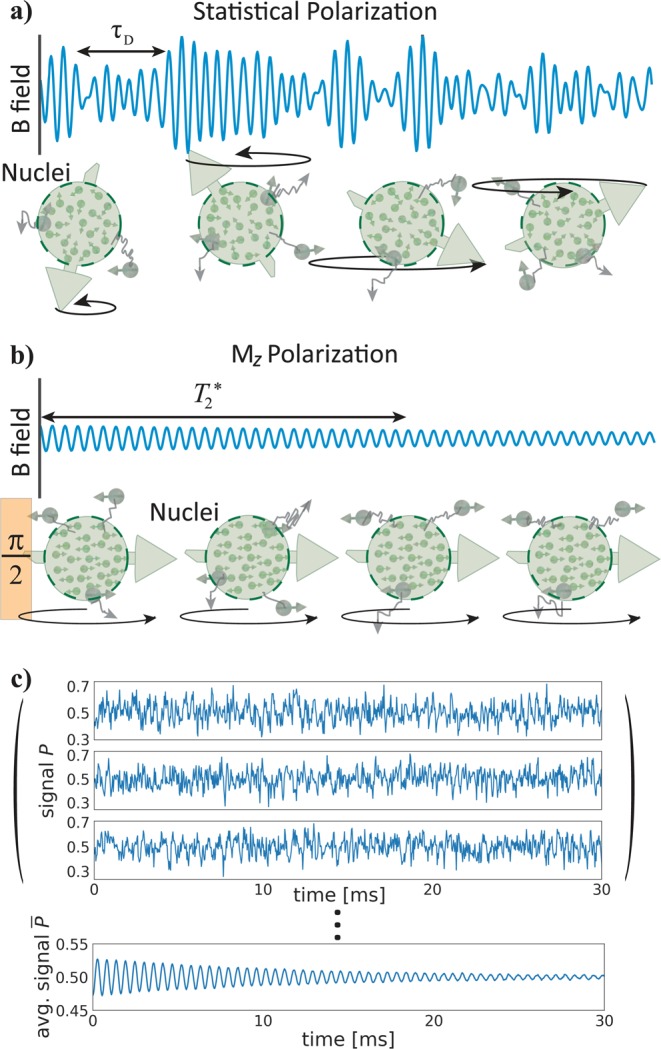Figure 1.

(a) Illustration of the Qdyne signal and the detected statistical magnetization by the NV center. The diffusion of nuclear spins in or out of the NV detection range leads to rapid fluctuations of the detected phase, introducing a short signal coherence time-scale, , on the order of the interaction correlation time. (b) The adoption of Mz Qdyne enables the detection of the FID signal from the nuclear z magnetization (thermal or hyperpolarized), regardless of the molecular diffusion. (c) An atomistic simulation of the time-dependent magnetic field induced by the diffusing nuclear spins on a 6.2 nm deep NV, where the statistical polarization is still clearly stronger than the hyperpolarized polarization. However, Mz Qdyne can be averaged over many runs Nm, significantly reducing the statistical polarization signal by 1/ while the Mz signal remains unchanged (due to the same initial phase at every run). The bottom figure shows the averaged signal for nuclear with , where only the smaller Mz polarization (oscillates between ±0.05) remains visible.
